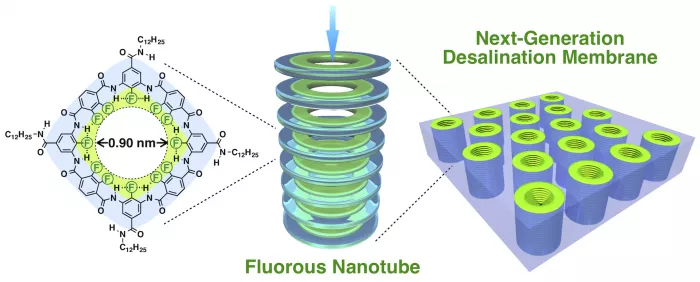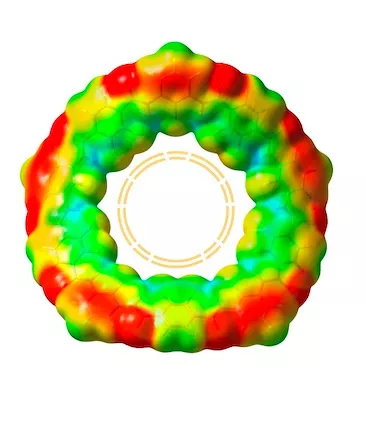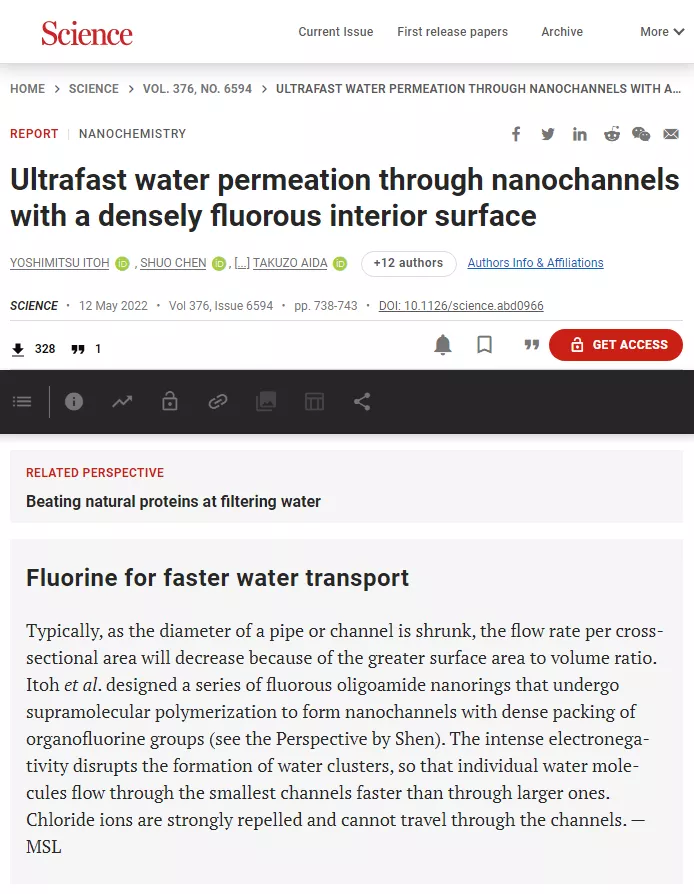In an article published in science on May 12, a team from the University of Tokyo solemnly introduced the research results of ultrafast water penetration through nano channels with dense fluorine inner surface As a new type of seawater desalination membrane made of Teflon like materials, it claims that this micro fluorine ring structure can effectively purify water and repel salt, and the pressure and energy consumption demand of large-scale industrial application are much lower.

(from Yoshimitsu Itoh / University of Tokyo)
As shown in the figure, the new desalination membrane is composed of a series of nanotubes lined with Teflon material that repels salt and allows water molecules to flow through with very low friction.
Given that many parts of the world are facing the dilemma of clean drinking water shortage, and with the intensification of climate change, the problem of freshwater resources will only become more and more serious.
For this reason, the technology related to desalination of brackish water or seawater is regarded by many as a vital strategic reserve.

Schematic diagram of cross section of nanotube allowing only water molecules to pass through (lined with fluorine ring)
We have seen many innovative devices, but they either use heat to evaporate and then condense, or use semi permeable membranes to filter salt and impurities - and the team led by Yoshimitsu Itoh, an associate professor at the University of Tokyo, chose the latter option.
Its key component is Teflon material, which is hydrophobic and non stick to the pot. In addition to cooking utensils and fluorine-based coatings, it is also often used to keep the water flow in the pipeline unblocked.
Then the research team Embedded cyclic fluoro molecules into the impermeable lipid layer. As a result, fluorine can not only help water molecules flow through with very low friction, but also its negative charge can effectively repel and prevent salt from passing through.

Cyclic fluoro molecular liners are connected together and form a nanotube
At present, the University of Tokyo has built a fluorine nano ring seawater desalination membrane with a width of 0.9 to 1.9 nm. After measuring the content of chloride ions (the main component of salt / NaCl) on both sides of the membrane, the experiments show that the new material has quite significant advantages.
Compared with other seawater desalination methods, this kind of fluorine ring nanotube can filter salt water more quickly and efficiently, and only needs lower pressure and energy consumption. Yoshimitsu Itoh pointed out:
It's really exciting to witness this achievement. The smaller channel we deployed in the test channel perfectly repels salt molecules. The larger channel is still better than other desalination technologies and even short carbon nanotube filters.
But what really surprised me was how fast the process happened. Laboratory samples show that its efficiency is thousands of times faster than that of typical industrial equipment, and about 2400 times that of experimental seawater desalination equipment based on carbon nanotubes.

Incidentally, although "TEFLON" has aroused many people's concerns about health problems, it will not sound an alarm in this study of fluorine ring nanotubes in seawater desalination.
The follow-up research team of the University of Tokyo plans to find ways to further reduce the cost of manufacturing fluorine nano ring membrane, while focusing on expanding its scale. If all goes well, they are expected to test 1 meter wide (3.3 feet) samples within a few years.
For details of this study, please also move to the recently published Science 》The original title was ultrafast water period through nanochannels with a densely fluorous interface surface》。